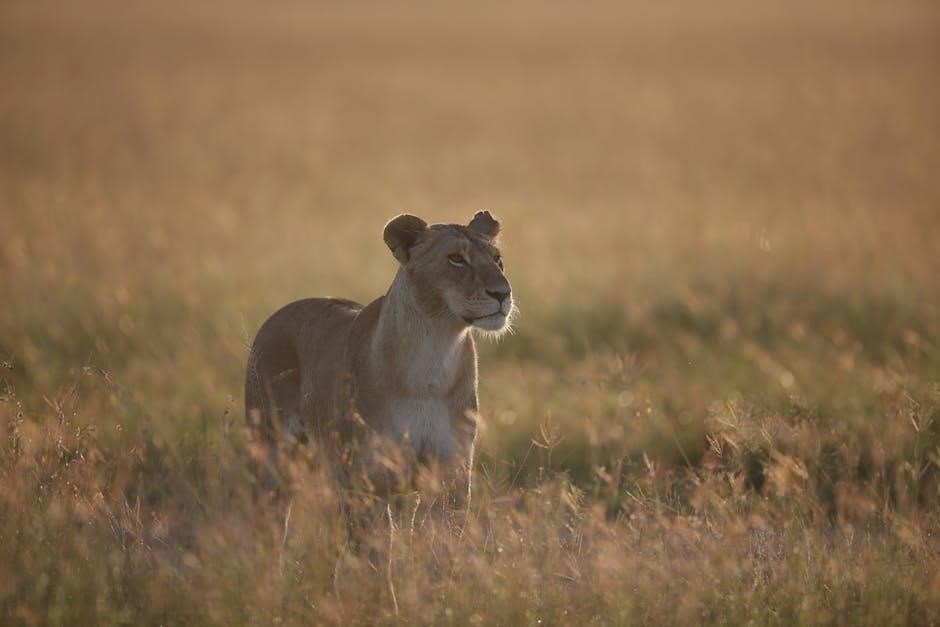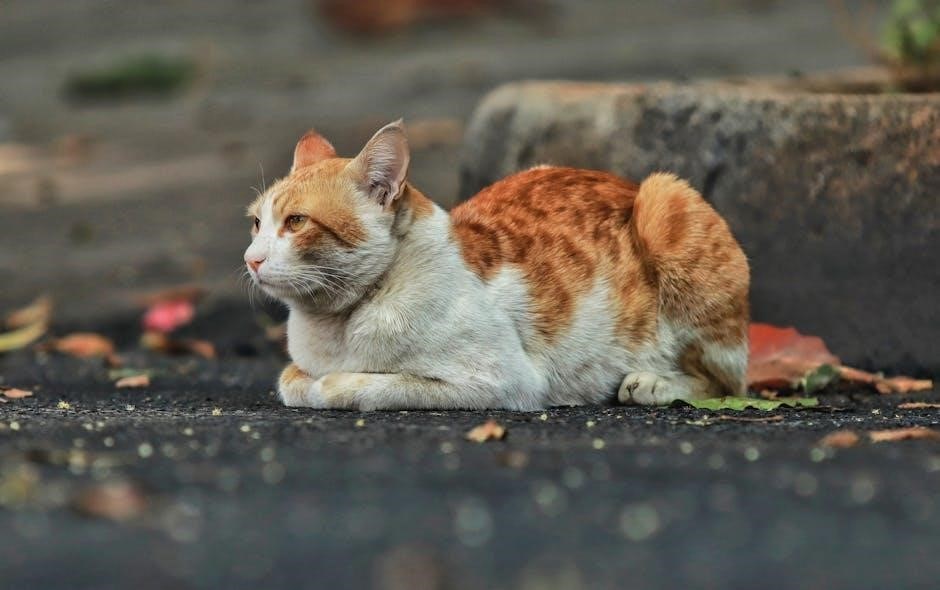Welcome to the Wilds of Eldraine Draft Guide! This guide explores the fast-paced, balanced format, highlighting key mechanics, color pairings, and strategies to help you succeed in draft events.
1.1 Overview of the Format
Wilds of Eldraine Draft is a fast-paced, balanced format offering diverse playstyles and strategies. It combines key mechanics like Food and Adamant with traditional Magic elements, creating a dynamic experience. Players can explore various archetypes, from aggressive builds to midrange and token-based strategies. The format rewards adaptability and understanding of synergies between cards. This guide will help you navigate its complexities and unlock the potential of Wilds of Eldraine Draft.
1.2 Key Mechanics in Wilds of Eldraine
Wilds of Eldraine introduces unique mechanics like Food and Adamant, which shape the draft experience. Food allows creatures to generate mana, enabling faster plays, while Adamant rewards players for curving their mana effectively. These mechanics promote strategic deck-building and in-game decisions, adding depth to the format. Understanding these core elements is essential for success in Wilds of Eldraine Draft, as they influence card evaluations and overall gameplay dynamics.
1.3 Importance of Understanding the Format
Understanding Wilds of Eldraine’s mechanics and nuances is crucial for drafting effectively. The format’s unique elements, like Food and Adamant, significantly impact card values and strategies. Grasping these concepts ensures better decision-making during picks and gameplay. It also helps in identifying synergies and building cohesive decks. A solid comprehension of the format enhances adaptability, allowing players to capitalize on opportunities and mitigate challenges, ultimately improving overall performance in the draft.
Key Mechanics in Wilds of Eldraine
Wilds of Eldraine introduces Food and Adamant as its core mechanics. Food provides mana generation over turns, while Adamant offers bonuses for dealing damage, shaping gameplay and strategies.
2.1 Food and Its Impact on the Game
Food is a groundbreaking mechanic in Wilds of Eldraine, introducing a new resource system. Players can create Food tokens, which generate mana when used, enabling early-game plays. This mechanic adds strategic depth, as managing Food tokens becomes crucial. It rewards decks that focus on generating and utilizing Food effectively, particularly in green-heavy strategies. Food also influences draft picks, as cards that synergize with this mechanic are highly valued. Its impact reshapes how players approach mana curves and early-game development.
2.2 Adamant and Its Role in Draft
Adamant is a powerful mechanic in Wilds of Eldraine, granting creatures a bonus when they have +1/+1 counters. This ability incentivizes players to focus on strategies that generate and utilize these counters effectively. In draft, prioritizing cards with Adamant or synergistic effects becomes crucial. It rewards decks that build around incremental growth, making it a key factor in shaping draft picks and deck archetypes. Adamant enhances the value of anthem effects and token generation, driving strategic deck-building decisions.
2.3 Other Relevant Mechanics
Beyond Food and Adamant, Wilds of Eldraine introduces other impactful mechanics. Knight creatures and Changelings offer versatility, while abilities like “When this creature enters the battlefield” provide immediate value. Lifelink and anthem effects further enhance survivability and board presence. These mechanics influence draft picks, rewarding players who build cohesive decks around synergistic cards. Understanding these interactions is key to maximizing your deck’s potential in the format.

Color Pairings and Archetypes
Wilds of Eldraine features diverse color pairings and archetypes, with popular combinations like Boros (Red-White) Tokens, Simic (Blue-Green) Midrange, and Gruul (Red-Green) Aggro dominating the format.
3.1 Overview of Color Combinations
In Wilds of Eldraine Draft, color pairings play a crucial role in shaping strategies. The primary combinations include Boros (Red-White), Simic (Blue-Green), Gruul (Red-Green), Orzhov (Black-White), Dimir (Blue-Black), and Izzet (Blue-Red). Each pairing offers unique strengths, such as Boros’ aggressive token generation or Simic’s value-based midrange. Players often prioritize synergies between colors to build cohesive decks, with some combinations proving more dominant than others in the format.
3.2 Popular Archetypes in the Format
Wilds of Eldraine Draft features several prominent archetypes that players gravitate toward. Gruul Aggro focuses on high-powered creatures and trample synergy, while Simic Midrange leverages adapt and card draw to outvalue opponents. Boros Tokens thrives on creating and enhancing an army of creatures. These archetypes are well-supported by the set’s mechanics and often dominate the meta, making them popular choices for drafters seeking consistency and power.
3.3 Emerging Strategies in Draft
Players are discovering innovative approaches to draft Wilds of Eldraine. One emerging strategy involves leveraging control-oriented builds that focus on card draw and removal. Others are experimenting with life gain synergies, utilizing Food tokens to sustain aggressive starts. Additionally, some drafters are blending Adamant with trample creatures to create explosive turns. These strategies challenge traditional archetypes and offer fresh ways to compete in the format, keeping the meta dynamic and unpredictable.

Top Commons and Uncommons
Key commons like Gingerbread Solicitor and Wicked Wolf shine for their versatility. Uncommons such as Embercleave and Bake Into Pie provide significant power and synergy.
4.1 Highest-Powered Commons in the Set
The most impactful commons in Wilds of Eldraine include Faerie Guidemother, Garenbrig Carver, and Wicked Wolf. These cards excel in their respective archetypes, offering consistent value. Faerie Guidemother enables flyer-heavy strategies, while Garenbrig Carver accelerates mana in ramp builds. Wicked Wolf provides early-game aggression and late-game utility, making it a versatile pick. These commons are staples in competitive drafts due to their high efficiency and adaptability across multiple strategies.
4.2 Key Uncommons to Look For
In Wilds of Eldraine, key uncommons like Gingerbread Cabin, Arcane Signet, and Fae of Wishes are highly sought after. These cards provide significant value, with Gingerbread Cabin enabling ramp strategies and Arcane Signet offering mana acceleration. Fae of Wishes is versatile, serving as both a creature and a potential game-changer in the late game. These uncommons are crucial for building cohesive decks and should be prioritized when available.
4.3 Hidden Gems in the Set
Several underappreciated cards in Wilds of Eldraine can greatly impact games when played correctly. Gilded Light is excellent for disrupting opponents’ plans, while Return of the Wildspeaker offers both ramp and card draw. Faerie Miscreant is a versatile early-game creature that can grow into a threat. These hidden gems often fly under the radar but can elevate a deck’s performance when utilized effectively, making them valuable pickups in the later stages of the draft.

Draft Strategy and Pick Order
Prioritize high-impact cards early, adapt to signals, and balance curve needs. Dynamic pick orders maximize synergy, ensuring a cohesive deck that leverages the set’s mechanics effectively.
5.1 First-Pick, First-Pack Strategy
In the first pack, prioritize high-impact cards like removal spells, evasive creatures, or powerful bombs. Assess the overall power level and adapt based on signals. Flexibility is key; don’t force an archetype early. Focus on cards that provide immediate value or enable synergies. Avoid speculative picks and aim to set a strong foundation for your deck. Balance between proactive and reactive cards ensures versatility for the remaining picks.
5.2 Mid-Pack Adjustments and Signals
As the draft progresses, pay close attention to signals from passed cards. Adjust your strategy based on what’s being drafted around you. Identify open colors or underdrafted archetypes to pivot into. Balance your curve by prioritizing missing pieces or synergies. Be flexible with your initial plan and adapt to the table’s dynamics. Recognize when to cut losses on a strategy if signals indicate heavy competition. Mid-pack adjustments often dictate the draft’s direction and final deck cohesion.
5.3 Late-Pack Picks and Curve Completion
In the late pack, focus on completing your mana curve and addressing gaps in your deck. Prioritize cards that fill specific roles, such as removal, evasion, or necessary synergies. Pay attention to signals indicating which cards are less desirable to others. Efficiently use late picks to bolster your deck’s consistency without compromising on power level. Avoid overvaluing cards that don’t directly contribute to your strategy, ensuring every pick enhances your overall game plan and competitiveness.

Archetype-Specific Strategies
Archetype-specific strategies in Wilds of Eldraine include focusing on aggressive plays with Gruul, midrange value with Simic, and token generation with Boros, each requiring tailored card selections and synergies to maximize effectiveness in draft.
6.1 Gruul (Red-Green) Aggro
Gruul (Red-Green) Aggro focuses on aggressive, high-impact creatures and burn spells to overwhelm opponents quickly. Prioritize creatures with high power and toughness, like Beanstalk Giant and Emberwilde Captain, to dominate early. Use removal spells such as Firebolt and Shocking Grasp to clear the way. Aim for a low-to-the-ground curve, ensuring consistent pressure and forcing opponents into a defensive position. Synergy between your creatures and spells is key to maintaining tempo and securing fast wins.
6.2 Simic (Blue-Green) Midrange
Simic (Blue-Green) Midrange combines card advantage with versatile creatures to outvalue opponents. Focus on creatures like Brineborn Serj Zubr and Centaur Courser, which provide card draw and evasion. Include efficient removal like Shocking Grasp and Drown in the Loch to control the board. Synergize blue and green cards for powerful interactions, ensuring a balanced curve. This archetype thrives on adaptability and late-game threats, making it a strong choice for players who prefer a mix of defense and offense.
6.3 Boros (Red-White) Tokens
Boros (Red-White) Tokens focuses on flooding the board with creatures and amplifying them with anthems. Cards like Weaselback Redcap and Goblin Assault generate tokens, while Teysa Karlov and Anointed Procession provide powerful synergies. Prioritize cheap, evasive creatures and removal like Shocking Grasp to protect your board. This archetype excels at explosive starts and late-game value, making it ideal for players who enjoy overwhelming opponents with sheer numbers and anthem effects.

Card Ratings and Tier List

This section evaluates cards based on their power level and draft viability, helping players prioritize picks and build cohesive decks effectively in Wilds of Eldraine.
7.1 Tier 1: Must-Pick Cards
Tier 1 cards are the highest priority picks in Wilds of Eldraine draft, offering exceptional power and versatility. These include Edgewall Innkeeper, Beanstalk Giant, and Fae of Wishes, which dominate games early or late. Cards like Shepherd of the Flock and Improbable Alliance also shine, providing value in multiple archetypes. These must-picks are rarely passed and should be prioritized to build a competitive deck, as they consistently outperform other options in the set.
7.2 Tier 2: High-Priority Picks
Tier 2 cards are highly desirable but slightly less universal than Tier 1. Examples include Gingerbread Cabin, Wicked Wolf, and Faerie Imposter, which excel in specific archetypes. These cards provide significant value when slotted into the right deck but may not always be the best first pick. They are excellent additions to a cohesive strategy and should be prioritized when they fit your draft plan or archetype, ensuring a strong foundation for competitive builds.
7.3 Tier 3: Situational Cards
Tier 3 cards are situational picks that shine in specific decks but may underperform elsewhere. Cards like Ironclad Krovod or Piper of the Veil excel in aggressive or aura-heavy strategies, respectively, but are less impactful in other builds. These cards should be picked when your deck is already taking shape or when they fill a specific niche. They can still contribute to a winning deck but require careful consideration and context to maximize their value effectively.

Common Mistakes to Avoid
- Overvaluing specific archetypes without adapting to the draft.
- Ignoring signals from other players’ picks and forced strategies.
- Mismanaging the draft curve, leading to inconsistent decks.
8.1 Overvaluing Specific Archetypes
One common mistake is overvaluing specific archetypes, leading players to force strategies that aren’t supported by their draft picks. This can result in weaker decks due to poor card synergy. Players should remain flexible and adapt to the cards they receive, rather than stubbornly chasing a predetermined archetype. Flexibility is key, as the draft may not always support the archetype you initially envisioned. Stay open to shifting strategies based on the cards available.
8.2 Ignoring Signals and Forcing Colors
Ignoring signals from other players and forcing specific colors can lead to a disjointed deck. Signals indicate which colors are being heavily drafted, helping you identify opportunities. Forcing colors despite weak signals often results in poor card quality and synergy. Stay flexible and adapt to the draft’s flow, as rigidly sticking to colors can prevent you from building a cohesive strategy. Pay attention to what’s being passed and adjust your picks accordingly to maximize your deck’s potential.
8.3 Mismanaging the Draft Curve
Mismanaging the draft curve is a critical error that can undermine deck performance. The curve refers to the distribution of card values across mana costs, ensuring a balance of early-game plays and late-game power. Overloading on high-cost cards risks a slow start, while too many low-cost cards may lack late-game impact. Ignoring the curve leads to inconsistent gameplay and reduces adaptability. A well-managed curve ensures consistent pressure and resilience, making it vital to balance picks according to mana cost throughout the draft.

Tips for Success in Wilds of Eldraine Draft
- Be adaptable and flexible with your strategy based on the draft’s progression.
- Pay attention to signals from other players to anticipate their moves.
- Manage food tokens and adamant effectively to maximize their utility.
- Practice regularly to improve your decision-making and deck-building skills.
9.1 Adapting to the Table
Adapting to the table is crucial for success in Wilds of Eldraine draft. Pay attention to the cards being passed and signals from other players to gauge the popular strategies. Be flexible with your picks and willingness to pivot if your initial plan isn’t working. Stay observant and adjust your draft strategy dynamically based on the table dynamics and card availability. This flexibility ensures you maximize your deck’s potential and stay ahead of the competition.

9.2 Managing Resources Effectively
Managing resources effectively in Wilds of Eldraine draft involves balancing mana curve and Food generation. Prioritize cards that provide consistent value and avoid overextending early. Use Food tokens strategically to fuel powerful abilities or generate card advantage. Maintain a balanced deck to ensure smooth transitions between early and late-game plays. Efficient resource management ensures you can apply pressure or defend when needed, keeping you ahead in tempo and overall game control.
9.3 Sideboarding Strategies
In Wilds of Eldraine Draft, sideboarding is crucial for optimizing matchups. Identify your opponent’s win conditions and disruptive elements to adjust your deck. Board in removal for high-impact creatures and include board wipes if facing token swarm strategies. Food and Adamant synergies should also influence your swaps—add Food generators if you’re low on mana or include Adamant enablers to enhance your late-game. Adapt your curve based on the opponent’s strategy to maximize efficiency and maintain tempo.
Mastering the Wilds of Eldraine draft requires balancing strategy, adaptability, and fun. Focus on key mechanics like Food and Adamant, while staying flexible. Practice consistently to refine your picks and in-game decisions. Success comes from understanding the format and enjoying the journey—happy drafting!
10.1 Final Thoughts on the Format
Wilds of Eldraine draft offers a unique blend of strategy and fun, with its innovative mechanics and deep gameplay. The format rewards adaptability and a strong understanding of the set’s synergies. While it can be challenging, the replayability and variety ensure that each draft feels fresh. Embrace the learning process, and don’t hesitate to experiment with different archetypes. With practice, you’ll unlock the full potential of this captivating format and enjoy the thrill of each draft experience.
10.2 Encouragement to Practice and Improve
Improving at Wilds of Eldraine Draft requires consistent practice and a willingness to learn from each session. Start by participating in mock drafts or online events to refine your skills. Analyze your picks and in-game decisions to identify areas for growth. Discuss strategies with fellow players or watch streams to gain new insights. Stay positive and embrace challenges as opportunities to improve. With dedication and patience, you’ll become a formidable drafter in no time—keep sharpening your craft!
10.3 Resources for Further Learning
For deeper insights, explore official Magic: The Gathering articles and strategy guides on the Wilds of Eldraine draft format. Websites like TCGplayer and ChannelFireball offer detailed breakdowns and expert opinions. YouTube channels such as Magic: The Gathering and Limited Resources provide video tutorials and draft simulations. Join forums like Reddit’s r/magicTCG and Discord communities for discussions and tips from experienced players. These resources will help you refine your drafting skills and stay updated on the meta.